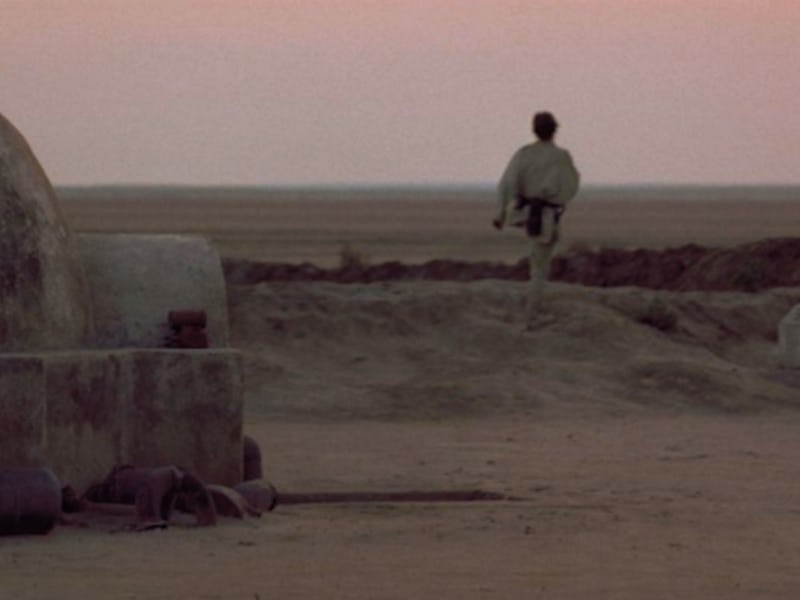In Star Wars, Luke Skywalker grows up on a moisture farm on an arid planet called Tatooine. To suck water from the air and preserve it as a commodity, he and his adoptive family use a fictional tool called a Vaporator. Recently, scientists reported that they are developing their own versions of the Vaporator to aide people in our own planet’s Tatooine-like, drought-stricken regions so that humans can survive on Earth rather than in a galaxy far, far away.
The amount of water vapor in the atmosphere is approximately equivalent to 10 percent of all of the freshwater lakes on Earth, but to drink it, we have to figure out how to collect it. In a paper recently published in Science, a team of scientists from MIT and the University of California, Berkeley report that they have created the first “efficient process” for capturing that water in areas with low humidity.
Previous systems were inefficient because they wasted a lot of energy cooling the air it took in. Cool air is conducive to harvesting water because cold air is less capable of holding onto water, so it condenses into liquid droplets. (That’s the same reason water condenses on a cold bottle of beer.) Because the areas that most urgently need to collect water from the atmosphere also are the most dry, this natural law poses a big problem for water harvesters trying to maximize efficiency: Devices in these regions have to cool massive amounts of air to get the same amount of water, which can get very expensive.
The scientists claim that the new proof-of-concept device outlined in the paper is a better system for these regions than previous tools for collecting fog and dew. Here’s how it works: This machine, powered entirely by solar heat, is made with a foamy material that passively attracts atmospheric moisture via a special chemical coating. That moisture is then released as liquid water and collected on a cooler lower surface. This version can collect up to 2.8 liters of water per kilogram a day at 20 percent humidity levels — the Sahara Desert usually hovers at around 30 percent — but the researchers behind it believe that with a few tweaks, it could collect much more from even drier areas in the future.
The proof-of-concept device.
“There are desert areas around the world with around 20 percent humidity but there hasn’t been a technology available that could fill that need,” co-author and MIT professor Evelyn Wang said in a statement. This technology, she explains, only needs sunlight to bring potable water to vulnerable populations.
There’s a pressing need to move technologies like this one out of the proof-of-concept stage. The World Bank predicts that by 2050, the water supplies of the Middle East, Asia, and Africa will experience a “severe hit” and drastically lower the gross domestic product of these regions. It’s predicted that water shortages will be exacerbated by population expansion and climate change — and means that the time to invest in moisture farms is now.
